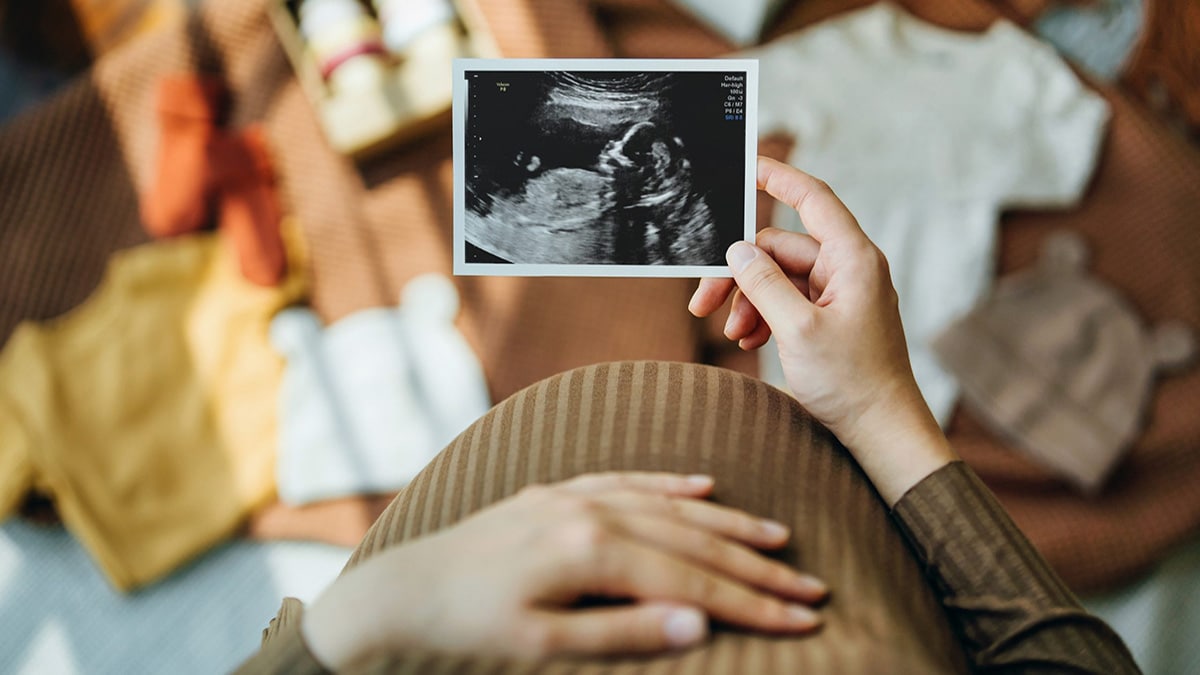What to know
- Use of more than one substance, or polysubstance use, during pregnancy is common.
- More research is needed to understand the possible effects from exposure to multiple substances during pregnancy.
- Increased evidence-based practices, such as screening and follow-up as appropriate, can help improve the health of pregnant women and their children.

Substance use during pregnancy can have health effects
Alcohol
Alcohol use during pregnancy can cause miscarriage, stillbirth, and a range of lifelong birth defects and developmental disabilities. These disabilities are known as fetal alcohol spectrum disorders (FASDs).
Opioids
Opioid use during pregnancy has been linked to poor fetal growth, preterm birth, stillbirth, specific birth defects, and neonatal abstinence syndrome (NAS) or neonatal opioid withdrawal syndrome (NOWS).
Nicotine
Using nicotine-containing products (cigarettes, e-cigarettes, or vape cartridges) increases the risk of health problems, such as preterm birth, low birth weight, and birth defects of the mouth and lip, for developing babies. Smoking during and after pregnancy also increases the risk of sudden infant death syndrome (SIDS).
Cannabis
Some research shows that cannabis (also known as marijuana) use during pregnancy is linked to low birth weight. It may also increase the chances for developmental problems for a child, such as problems with attention and learning. Further research is needed to better understand how cannabis may affect pregnant women and developing babies.
Other substances
Nonmedical use of prescription medications can lead to an increased risk of adverse health outcomes and overdose. Combining substances, such as using opioids with benzodiazepines or opioids with alcohol, can also increase the risk of drug overdose.
If you need help for substance use, talk with your healthcare provider. Visit FindTreatment.gov to find local resources.
Polysubstance use is common during pregnancy
Many women may use more than one substance during pregnancy. A 2020 study found that about 10% of pregnant women reported current alcohol use. Among them, about 40% also reported current use of one or more other substances.1
Similar results have been seen with cannabis, opioids, and smoking.234
Impacts of polysubstance use on infants are not well known
The effects of polysubstance use during pregnancy are not well known. Limitations to data collection can include the following:
- Data sources are often self-reported information, which may under-report because of stigma and legal implications.
- The timing of substance use during pregnancy can be difficult to determine.
- Some respondents may not know they are pregnant at the time of a survey, which could lead to an underestimation of substance use during pregnancy.
- Studies often examine use of a single substance, but polysubstance use is not always accounted for in analyses.
More research is needed to better understand the effects of polysubstance use on pregnant women and their babies. This information could help explain the effects of prenatal polysubstance use compared to the effects of each individual substance.
U.S. Preventive Services Task Force recommendations
The U.S. Preventive Services Task Force (USPSTF) makes recommendations about the effectiveness of specific clinical preventive services. These recommendations are based on evidence of both the benefits and harms of the service. For substance use among adults, including pregnant women, the USPSTF currently provides the following recommendations:
- Unhealthy Drug Use: Screening (2020)
- "The USPSTF recommends screening by asking questions about unhealthy drug use in adults age 18 years or older. Screening should be implemented when services for accurate diagnosis, effective treatment, and appropriate care can be offered or referred." (Grade B)
- Applies to adults 18 years or older, including women who are pregnant or postpartum, and adolescents aged 12–17 years in primary care settings
- Unhealthy Alcohol Use: Screening and Behavioral Counseling Interventions (2018)
- "The USPSTF recommends screening for unhealthy alcohol use in primary care settings in adults 18 years or older, including pregnant women, and providing persons engaged in risky or hazardous drinking with brief behavioral counseling interventions to reduce unhealthy alcohol use." (Grade B)
- Applies to adults 18 years or older, including women who are pregnant
More information
AAP: Fetal Alcohol Spectrum Disorders Program
AAP: Substance Use and Prevention
ACOG: Fetal Alcohol Spectrum Disorders Prevention
ACOG: Marijuana Use During Pregnancy and Lactation
ACOG: Opioid Use Disorder and Pregnancy
Academy of Perinatal Harm Reduction
CDC: Alcohol Screening and Brief Intervention
CDC: Fetal Alcohol Spectrum Disorders
CDC: Opioid Use During Pregnancy
CDC: Treatment of Opioid Use Disorder During Pregnancy
CDC: Substance Use During Pregnancy
CDC: What You Need to Know About Marijuana Use and Pregnancy
March of Dimes: Beyond Labels – Substance Use and Pregnancy
- England LJ, Bennett C, Denny CH, et al. Alcohol use and co-use of other substances among pregnant females aged 12–44 years – United States, 2015–2018. MMWR Morb Mortal Wkly Rep 2020; 69(31): 1009-1014.
- Ko JY, Coy KC, Haight SC, et al. Characteristics of marijuana use during pregnancy – eight states, Pregnancy Risk Assessment Monitoring System, 2017. MMWR Morb Mortal Wkly Rep 2020; 69(32): 1058-1063.
- Jarlenski M, Barry CL, Gollust S, et al. Polysubstance use among US women of reproductive age who use opioids for nonmedical reasons. Am J Public Health 2017; 107(8):1308–1310.
- Patrick SW, Dudley J, Martin PR, et al. Prescription opioid epidemic and infant outcomes. Pediatrics 2015;135(5):842–850.
